By no means an expert birder, I am both exhilarated and frightened by spring. I’m exhilarated because of all the migrants moving through; I’m frightened because of all the migrants moving through. Positioned right in the middle of the Central Flyway, Lawrence, Kansas, offers some of the best spring birding has to offer. But migrants don’t visit Kansas to be identified; they fly through to rest for a bit, eat a ton, and hustle along to their summer breeding and nesting grounds. As ever, they’re furtive and fast. Spring opens only a short window of time to see them all, which can raise the blood pressure. I will have to wait for fall to see them again. By then though, they will no longer be singing love songs and will have lost their sexy breeding colors, making them harder to spot, even with the “helpful” section in field guides, “Confusing Fall Warblers.” It’s a spring birder’s obsession to locate old friends and identify new ones, and often while tramping around in the wet and cold, nursing “warbler neck,” the ailment well-known to spring birders, who tip their heads all the way back for extended periods to see the warblers flitting through the treetops to gorge on aphids, caterpillars, and other insects.
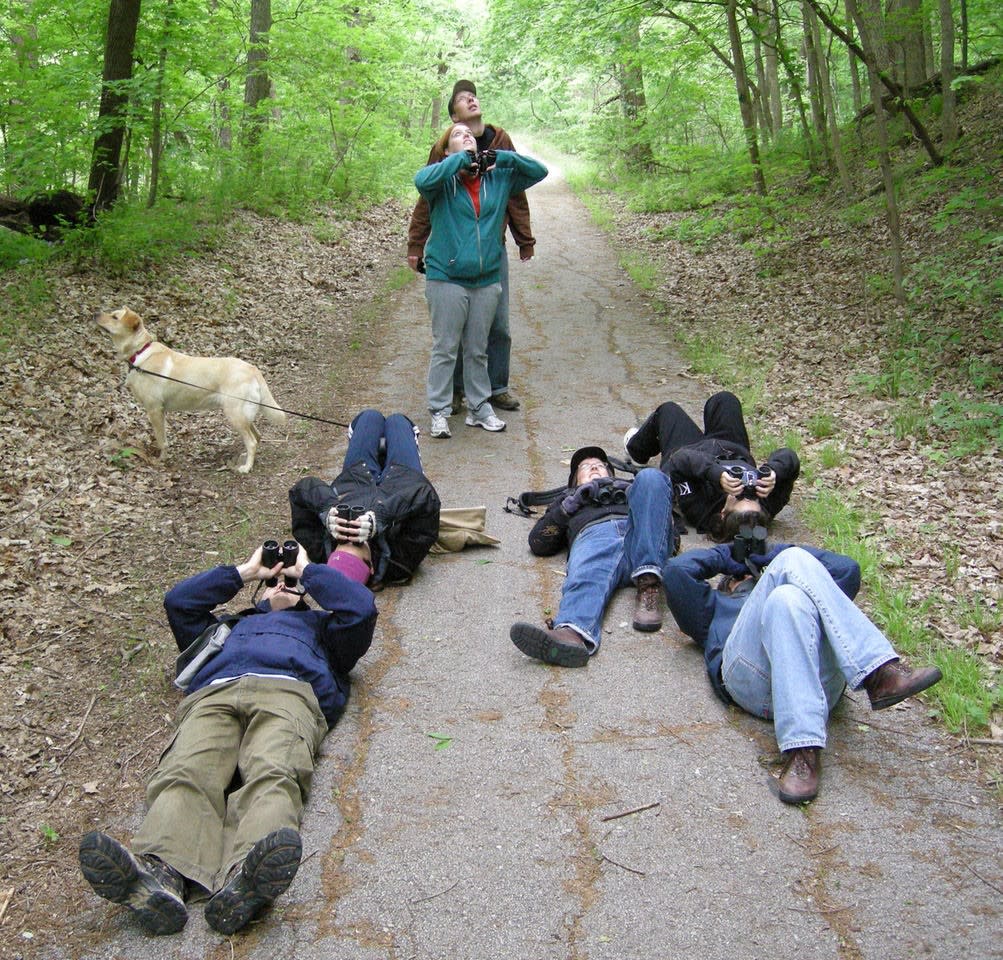
A group of people (and a dog) with warbler neck (blogger lower right).
Not unlike the arcade game, Whack-a-Mole, birds pop up all around in the spring, and sometimes, the best you can do is catch the tail end of a migrant as it flies off and another one pops into view. I’ve been on birding field trips when we were surrounded by so many visiting birds that the weak-necked among us gave up and laid flat on the ground, our binos pointed skyward, a crime scene minus the blood.
![]()
Photo Credit: Kentucky Warbler by Mark Gordon/Audubon Photography Awards
Sometimes, you get lucky though. Two years ago, the sugar maple right outside my picture window had an inordinately heavy load of aphids, which it was only too happy to serve up to a host of warblers. My wife Lisa and I caught stellar views of Chestnut-sided, Kentucky, Yellow, Orange-crowned, Black-and-white, and several other migrating warbler species right from the comfort of our living room.
Spring skies offer their own beautiful distractions for birders. With the rapid departure and arrival of competing air masses come mare’s-tail clouds, the harbinger of approaching weather. You’ll also find yourself birding under the blue-green-gray scudding clouds whipped in by the gusts of March and April.
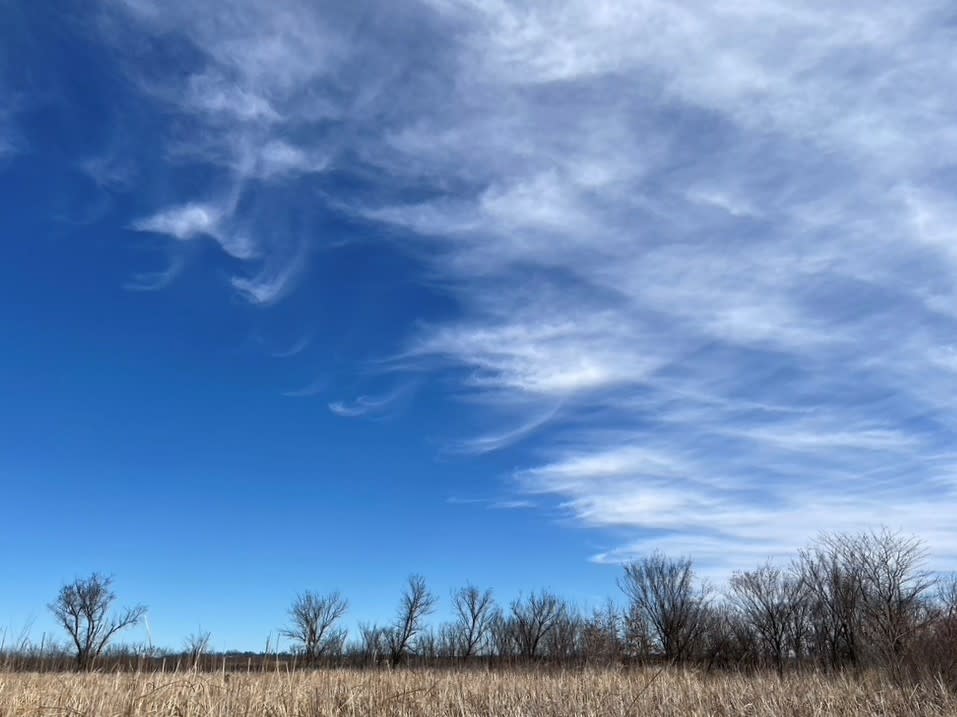
Also, because things haven’t fully leafed-out, spring allows you to get a close-up view of the tiny cup nests left behind from last year’s breeding season.
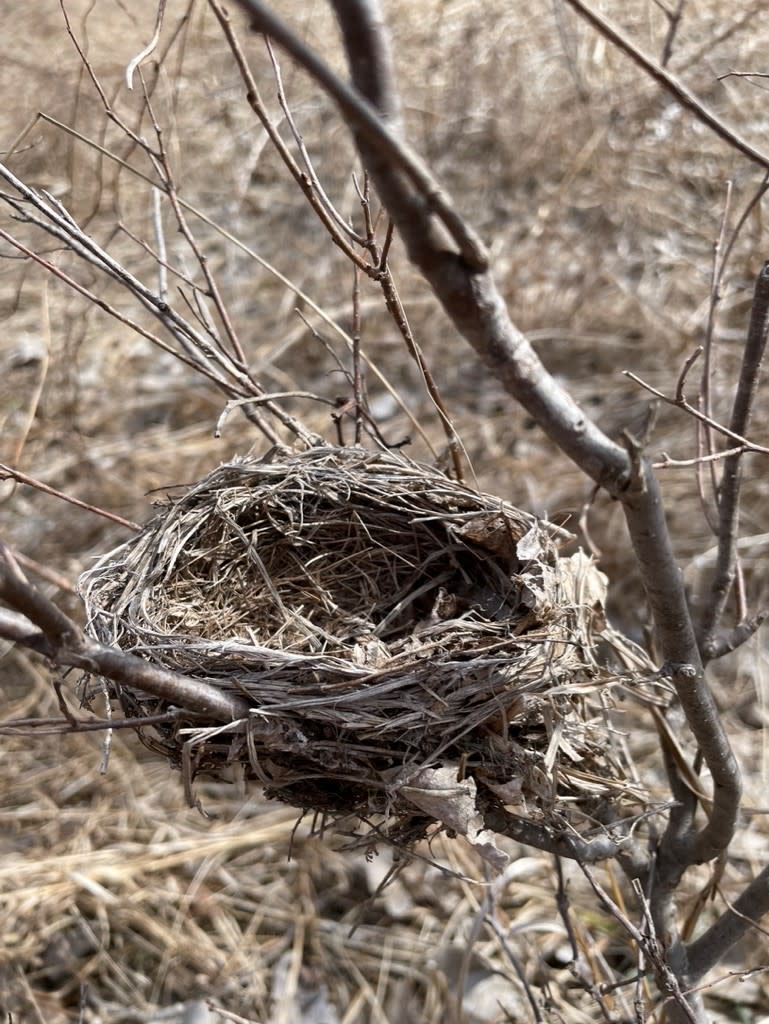
Mostly, spring migration is like a family reunion. You still see the birds who never leave—parents, siblings, and great-aunt Lucy (Chickadees, Northern Cardinals, Titmice, American Goldfinches, Blue Jays, Mourning Doves, etc.). You also see the summer family members back for an extended visit in the guest house (Indigo Buntings, Great-crested Flycatchers, Red-eyed Vireos, etc.). But then here come those exotic cousins who make you vaguely jealous with their flashy clothes and exciting lives in far-flung locales (migrating shorebirds, waterfowl, and, of course, the non-resident wood warblers.)
Following are some excellent options in Lawrence for joining in on the vernal chaos:
Baker Wetlands
1365 N. 1200 Road
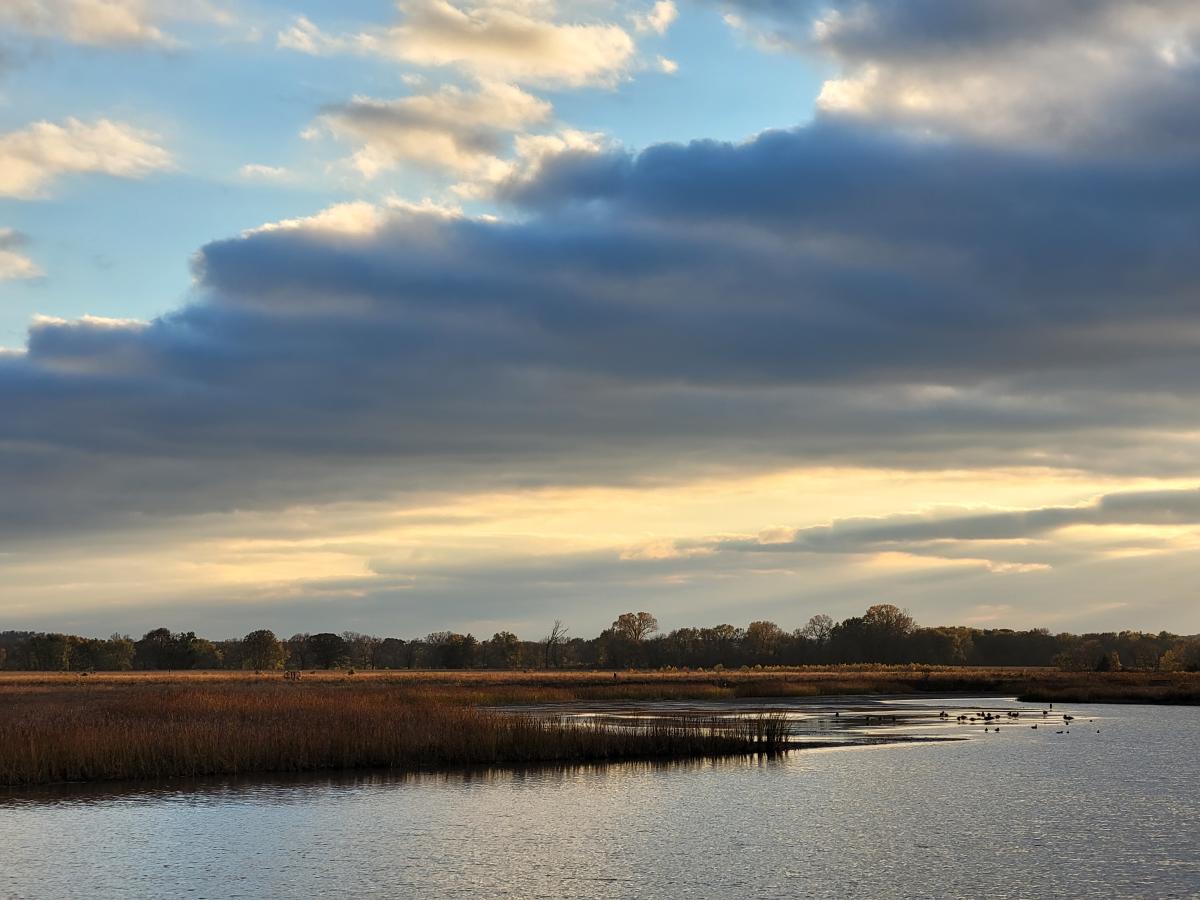
If you begin your birding from the Haskell Street entrance on the east (just past the entrance to the South Lawrence Trafficway) where there is a small parking lot, you’ll walk a grass-, cattail- and tree-lined gravel road, and, thus, see plenty of migrating songbirds. This is also your chance to say goodbye to the large flocks of sparrows hanging out in the area over the winter.
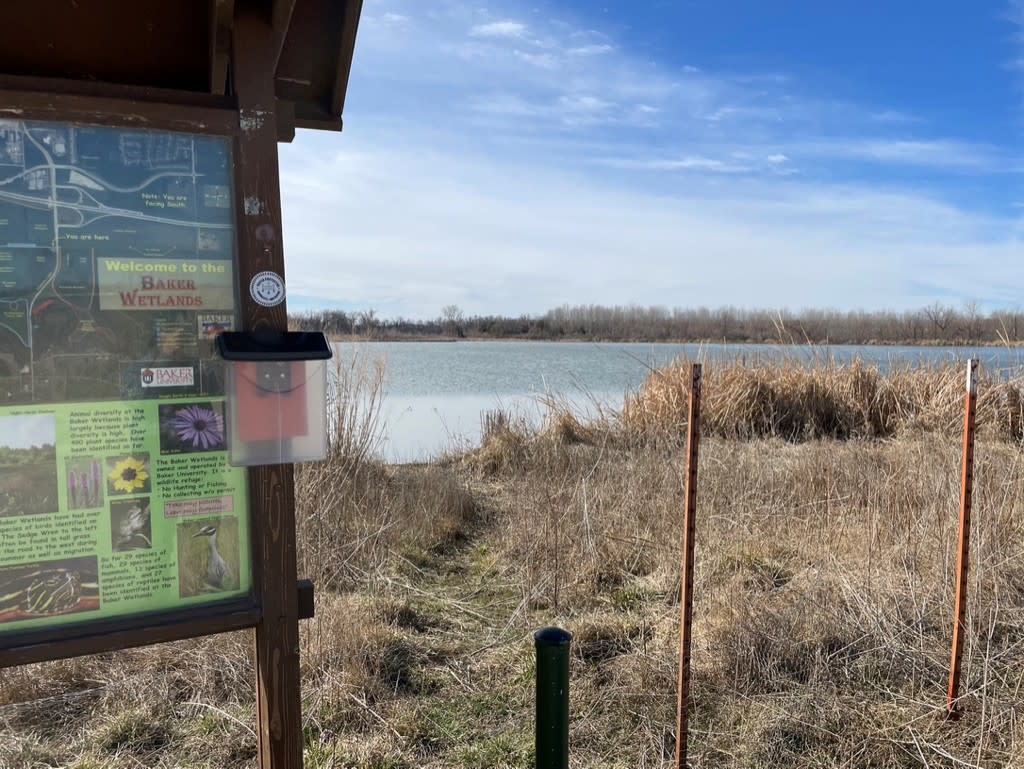


If you start from the Baker Wetlands Discovery Center on the western side, you’ll encounter many migrating waterfowl and shorebirds who rely on the area’s wide, shallow ponds as a refueling station. Some of the birds are bound for nesting grounds as far as the Arctic. (If you have a scope, this is the time to bring it.) Paved and accessible board bridges heading out from the Discovery Center side allow everyone an opportunity to get in on the action.

On last year’s spring birding event led by Roger Boyd, Jayhawk Audubon Society’s field trip chair, a large group of us found an embarrassment of migrant riches. Here are some highlights: a Willet, American Avocets, Wilson’s Phalaropes, Least and Wilson’s Terns, and several scurrying rafts of tiny shorebirds affectionately called “peeps,” among them White-rumped, Semipalmated, and Baird’s Sandpipers. Join Roger Boyd for this year’s Baker Wetlands field trip co-sponsored by Jayhawk Audubon Society and the Lawrence Public Library on Saturday, April 29th when Spring migration will be in full swing. We’ll meet at 8:00 am at the Discovery Center (1365 N. 1250 Rd).
![]()
Photo Credit: American Avocet by Georgy Semenov/Audubon Photography Awards
Lawrence’s Old Landfill
Lawrence Riverfront Park’s levee trail near N 2000 Road

This lesser-known birding gem lies just off the western edge of the levee trail, the former site of Lawrence’s landfill. You can park right along the road near the gate across the levee, or you can ride your bike due west until you see the white City maintenance shed on the south side, where the trailhead begins. A gravel path takes you across a creek through a nice tall stand of deciduous woods. Pause there and look up. Depending on the day, you may need to walk no further since the riparian area attracts so many species. The trail leads west through a glade into another tall stand of woods where many wood warblers will be moving through from late April to mid-May. This is also home to many summer residents, such as Eastern Wood-Pewees, Indigo Buntings, Common Yellowthroats, Red-eyed and Warbling vireos, Great Crested Flycatchers, and Summer Tanagers.
![]()
Photo Credit: Indigo Bunting by Sunil Gopalan/Audubon Photography Awards
KU Field Station
350 Wildhorse Road
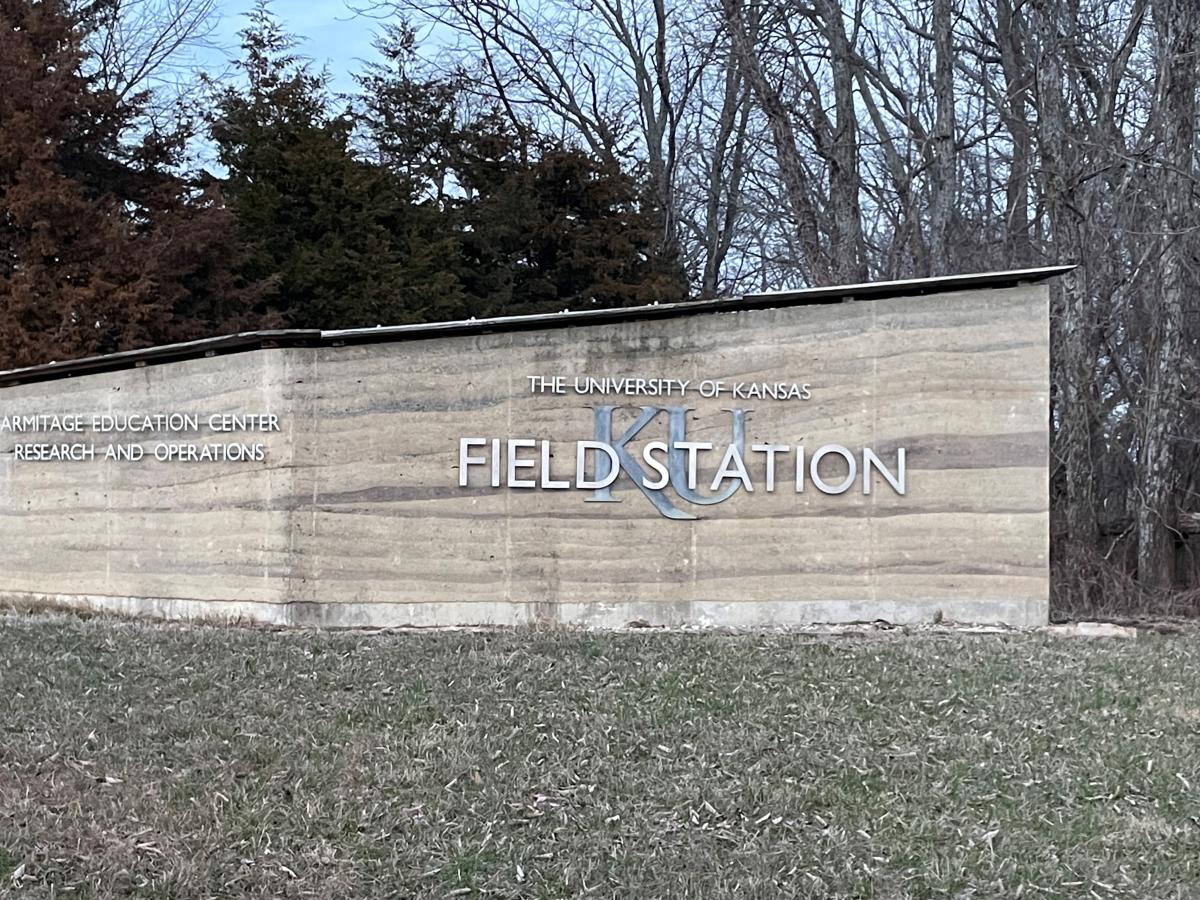
One of our first birder friends, Tom Kreissler, took Lisa and me on many magical expeditions. The most memorable involved a late evening trek to the area around the field station for a view of American Woodcock calling and courtship flight displays, one of the most elaborate I’ve ever seen. Lawrence lies near the eastern edge of their breeding range, so you don’t want to miss this opportunity. If you arrive at dusk in mid to late March, you can hear these chubby little bug-eyed shorebirds (also called Timberdoodles) “tock” and “peent” their way in an elaborate spiral into the dusk. Once the males have reached a respectable height, they zigzag their way back down to impress the ladies.
![]()
Photo Credit: American Woodcock by Teri Shors/Audubon Photography Awards
This year, we heard and saw the spectacle right in the fields around the Armitage Education Center building. This won’t require much of a hike at all. Just make sure to park your vehicle outside the gate because it closes at dusk. If group birding is your thing, the next Woodcock viewing is Tuesday, March 21 at 6:45 p.m. Make sure to RSVP to KU Field Station Education Director Wendy Holman at wendyholman@ku.edu if you’re interested, because trips fill up fast!

The blog author, listening intently for American Woodcocks



